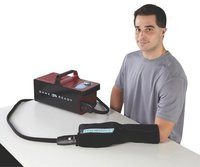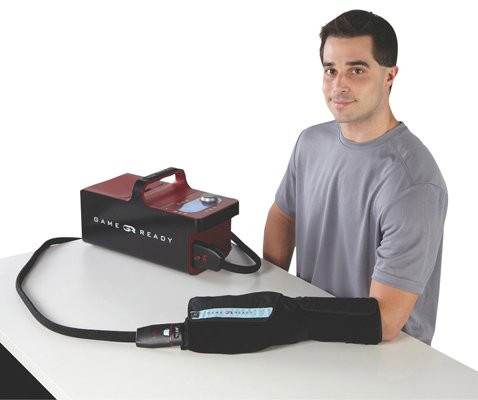 9th Oct 2015
9th Oct 2015
How a Cold Compression Therapy Machine Benefits Patients across Multitude Diagnoses
When you’re learning about first aid for an injury, you’re taught the acronym RICE: Rest, Ice, Compression, and Elevation. Now, it’s possible to use ice and compression simultaneously to great benefit. Ice is excellent at reducing the inflammatory response and pain associated with heat generated by increased blood flow and/or blood loss, while compression aims to reduce swelling that results from the inflammatory process. Although some swelling is inevitable, too much swelling results in significant loss of function, excessive pain and eventual slowing of blood flow through vessel restriction. Combined, active compression plus cold therapy has proven to be more effective than cold therapy alone. Compression provides a pumping action which actively reduces edema and improves the healing process by bringing oxygenated blood and nutrients to the injury. The cold compression machine provides deeper penetration and longer lasting effects by constantly circulating the cold water. These benefits make cold compression therapy a powerful tool to be used in physical therapy for a multitude of diagnoses.
Top Uses of Cold Compression Therapy in Physical Therapy
- Achilles Tendinopathy: The air pressure from the cold compression unit wraps the heel and ankle for better surface contact, allowing the system to pull heat away from the injury site more efficiently and lowers pain and swelling. Additionally, the active pneumatic compression mimics the body’s natural muscle contractions which stimulate blood flow while simultaneously carrying edema away.
- Multiple Sclerosis: Research shows that slight decreases in body temperature have been shown to produce a temporary relief of MS-associated symptoms. Cold compression therapy delivers cold therapy that works faster, penetrates deeper and lasts longer than other treatment modalities. Also, cold compression units come with an assortment of wraps, allowing for treatment of multiple body parts.
- Carpal Tunnel Syndrome: The cold compression therapy wraps have an active temperature exchange unit that maintains cool temperature and compression to the wrist, which immediately reduces swelling and helps reduce pain and inflammation. This immediate reduction in swelling aids in reducing pressure on the nerve in the wrist, which causes pain in the carpal tunnel.
- Arthritis: The benefit of deep penetration from cold compression units provides relief for inflamed joints. This helps reduce swelling and pumps away excess fluid that can have a negative impact on range of motion. The freshly oxygenated blood that is pumped to the area helps repair damaged tissues and reduces cell damage.
- Scoliosis pain: One of the most basic treatments to alleviating pain and discomfort associated with having Scoliosis is cold therapy. Again, the air pressure of the cold compression unit wraps the body for better surface contact. Cold therapy can decrease pain by limiting the pain fiber transmission and nerve conduction.

GameReady GRPro 2.1 Active Cold Compression Unit
Cold therapy is one of the oldest and most powerful physical therapy modalities. Its continued use is due to its comprehensive benefits amongst diverse patient problems and injuries. Advancements have led to the creation of Cold Compression Therapy units, which, if anything, improve upon the original RICE idea. By combining cold therapy with compression, patients are able to feel positive benefits faster and experience less downtime from their injuries.
For more information about physical therapy modalities and devices visit ProHealthcareProducts.com.






